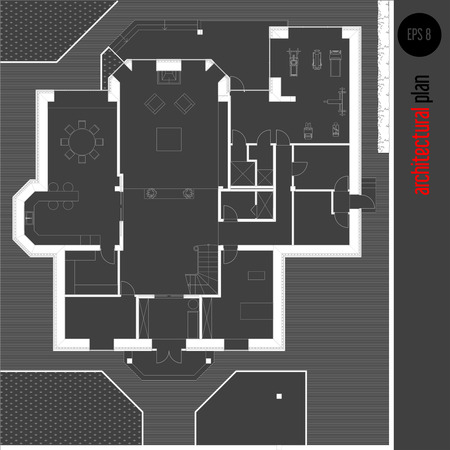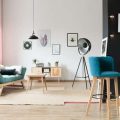Introduction: The Role of Lighting in British Interior Culture
In Britain, the subtle interplay of light and shadow is far more than a practical necessity—it is an art form that shapes the very heart of domestic life. Lighting, particularly through table and floor lamps, plays a pivotal role in crafting that quintessentially British sense of “homeliness,” where comfort and warmth are paramount. Whether in a Victorian terrace or a contemporary London flat, ambient lighting is thoughtfully curated to foster an inviting atmosphere. Unlike the harsh glare of overhead fixtures, the gentle glow from well-chosen lamps softens interiors, highlights textures, and brings depth to living spaces. This approach reflects a deep-seated cultural value: the home as a sanctuary against the unpredictable British weather, a cocoon where one can unwind with a cup of tea or share stories by lamplight. As we explore current design trends, it becomes clear that table and floor lamps are not merely decorative accents—they are integral elements that contribute to the layered, lived-in charm so characteristic of British interiors.
2. Timeless Classics: Heritage-Inspired Designs
British design is renowned for its ability to blend the historic with the contemporary, creating interiors that feel both familiar and fresh. When it comes to table and floor lamps, heritage-inspired motifs play a pivotal role in shaping today’s lighting trends, infusing homes with a sense of timeless elegance. Classic styles such as Art Deco, mid-century modern, and Victorian influences are reimagined by British designers, offering pieces that honour tradition while catering to modern lifestyles.
Heritage Motifs in Contemporary Lamps
From the ornate detailing of the Victorian era to the geometric precision of Art Deco, these historical references are not simply decorative—they also influence the function and mood created by each lamp. The following table outlines how different British heritage styles are incorporated into contemporary lamp design:
Design Era |
Key Features |
Aesthetic Impact |
Functional Considerations |
|---|---|---|---|
Victorian |
Ornate brass bases, etched glass shades, floral motifs | Opulent, nostalgic atmosphere; adds visual richness to interiors | Soft diffused light ideal for reading nooks or classic drawing rooms |
Art Deco |
Sleek lines, symmetrical shapes, bold metallic accents | Luxurious yet streamlined; introduces a sense of sophistication and glamour | Directional lighting perfect for accenting artwork or architectural features |
Mid-century Modern |
Tapered legs, organic forms, muted colour palettes | Relaxed and understated; creates a balanced contrast with contemporary décor | Adjustable arms or swivel heads enhance versatility for various tasks |
The Enduring Appeal of British Heritage Design
The resurgence of these heritage styles in modern British homes reflects a collective appreciation for craftsmanship and authenticity. British brands frequently reinterpret these motifs using updated materials—like brushed steel in place of traditional brass or eco-friendly finishes—ensuring that classic elegance meets today’s sustainability standards. By blending old-world charm with modern functionality, these lamps serve as both statement pieces and practical solutions for crafting an inviting ambience.

3. Embracing Modernity: Contemporary British Lamps
In the ever-evolving landscape of British interior design, modern table and floor lamps have become emblems of contemporary living. Today’s British designers are at the forefront of innovation, blending minimalist forms with daring materials to create lighting that goes far beyond mere functionality. The clean lines and uncluttered silhouettes of these lamps speak to a broader cultural preference for simplicity and order, echoing the minimalist ethos that has taken root in urban British homes.
At the heart of this movement is a celebration of bold materials—think brushed brass, smoked glass, or matte black metal—each selected not just for visual impact but also for their tactile qualities. Contemporary lamp designs often play with contrasts: industrial finishes paired with soft textiles, or geometric bases supporting organically shaped shades. These juxtapositions reflect a uniquely British knack for balancing tradition with experimentation, ensuring that each piece feels both familiar and refreshingly new.
Innovative shapes are another hallmark of modern British lighting design. From sculptural floor lamps that double as art installations to table lamps featuring asymmetric forms, these pieces capture the playful spirit of today’s creative scene. Designers frequently draw inspiration from architectural motifs or even elements of British pop culture, resulting in lamps that serve as conversation starters within any space. This trend aligns with current lifestyle values—flexibility, personal expression, and a desire for environments that inspire calm as well as curiosity.
Ultimately, contemporary British table and floor lamps embody the country’s progressive approach to ambience. They provide not only illumination but also a distinctive sense of identity, transforming everyday living areas into curated expressions of modern British taste.
4. Sustainability and Local Craftsmanship
British design in table and floor lamps has experienced a significant shift towards sustainability, with eco-friendly materials and a renewed appreciation for local craftsmanship taking centre stage. As environmental concerns become increasingly prominent in the public consciousness, designers and consumers alike are seeking lighting solutions that minimise environmental impact without compromising on style or ambience. This focus on responsible sourcing is reflected in a variety of ways across the UK lighting industry.
Eco-Friendly Materials and Recycled Elements
Modern British lamp design often incorporates recycled glass, reclaimed wood, and metals sourced from post-industrial waste. These materials not only reduce landfill but also imbue each piece with a unique character, celebrating imperfections as marks of authenticity. For example, many independent studios now offer lamps made from upcycled copper piping or reimagined vintage components, blending nostalgia with innovation.
| Material | Sustainable Benefit | Common Use in Lighting |
|---|---|---|
| Recycled Glass | Reduces raw material demand; less energy-intensive | Lamp bases, shades |
| Reclaimed Wood | Prevents deforestation; adds rustic charm | Stands, decorative accents |
| Recycled Metals | Cuts down on mining; durable and versatile | Structural frames, fittings |
Championing Local Artisanship
A distinctive hallmark of contemporary British lighting design is the revival of traditional craft techniques. Many brands collaborate with skilled artisans from regions such as the Lake District or Cornwall, ensuring that age-old methods—like hand-blown glass or turned wood—remain at the heart of modern interiors. This not only supports local economies but also creates heirloom-quality pieces that reflect Britain’s rich craft heritage.
The Value of Bespoke Lighting
Bespoke lamp-making services are thriving as more customers seek personalised designs tailored to their spaces. Whether it’s a hand-glazed ceramic base from Stoke-on-Trent or a shade woven by Scottish textile artists, these one-of-a-kind fixtures allow homeowners to infuse their environments with individuality while supporting homegrown talent.
Looking Ahead: Sustainable Innovation
The future of British lighting promises further exploration into biodegradable materials, low-impact production techniques, and closed-loop manufacturing systems. As the movement gathers pace, sustainability is no longer a niche concern but a defining element shaping the evolution of ambience in British homes through thoughtful table and floor lamp design.
5. The British Palette: Colour, Texture, and Materials
When it comes to shaping the ambience of British interiors through table and floor lamps, colour, texture, and materials play a quietly powerful role. Unlike bolder international trends, British design often leans into a palette that is understated yet deeply evocative. Think of the muted pastels reminiscent of misty mornings in the Cotswolds, or the deep navy blues and forest greens that conjure images of moody Scottish lochs and ancient woodlands. These hues are not chosen merely for fashion; they serve as a canvas for storytelling and emotional resonance within the home.
The Allure of Muted Hues
British lamp designs frequently favour subtlety over spectacle. Soft blush pinks, sage greens, and powdery blues echo the landscape’s ever-changing weather and understated charm. These gentle shades invite calmness and warmth, making them perfect for creating a tranquil ambience in living rooms or bedrooms. Even within urban flats, such colours evoke a sense of rural retreat—an essential part of Britain’s design psyche.
Tactile Finishes: A Sensory Experience
Texture is equally significant in British lighting design. Matte ceramics, brushed metals, and delicately ribbed glass are common choices. These tactile finishes do more than catch the eye; they invite touch and interaction, adding depth to both modern and heritage-inspired interiors. Lamps with linen or woven fabric shades diffuse light softly, bathing spaces in a comforting glow that feels both contemporary and timeless.
Materials That Tell Stories
Quality materials are at the heart of British craftsmanship. Whether it’s hand-turned oak bases sourced from local woodlands or mouth-blown glass made by skilled artisans, these elements embody authenticity and tradition. Brass fittings add a hint of vintage glamour without overpowering the overall look. This emphasis on provenance and natural beauty ensures that each lamp becomes more than just a source of light—it’s an integral part of the home’s narrative and mood.
Ultimately, the British approach to lamp design embraces colour palettes inspired by nature, textures that appeal to our senses, and materials steeped in heritage. Together, these elements create ambient lighting that feels uniquely personal and unmistakably British.
6. Creating Ambience: Lighting Layering and Placement
When it comes to achieving that quintessentially British ambience, the strategic layering and placement of table and floor lamps play a pivotal role. In British homes, the approach is less about uniform overhead lighting and more about curating a warm, inviting atmosphere through thoughtfully positioned luminaires. This method is evident in lounges, bedrooms, and studies alike, where lighting serves both functional and aesthetic purposes.
The Art of Layered Lighting
Layered lighting is a hallmark of British interior design, blending ambient, task, and accent lighting to produce depth and character within a space. Table lamps with fabric shades are often used to diffuse light gently across side tables or mantlepieces, providing an intimate glow perfect for evening relaxation or social gatherings. Meanwhile, floor lamps—frequently chosen for their sculptural forms—are positioned beside reading nooks or next to armchairs to enhance both usability and charm.
Positioning for Functionality
Placement is never arbitrary; it’s guided by how spaces are used throughout the day. In lounges, a pair of table lamps flanking a fireplace or sofa creates symmetry and invites conversation. In bedrooms, bedside lamps with adjustable heads offer targeted illumination for reading without disturbing a partner—a subtle nod to the British appreciation for personal comfort. Studies benefit from angled floor lamps or desk lamps placed to minimise glare and shadow, reflecting the importance of practicality in workspaces.
Atmosphere through Subtlety
British sensibility favours understated elegance over ostentation. Soft pools of light are preferred over harsh brilliance, achieved by using dimmable bulbs or layered shades that allow for mood adjustments according to time of day or occasion. The result is a versatile ambiance—cosy yet sophisticated—that supports everything from quiet evenings in to lively gatherings with friends.
This unique approach to lamp positioning and layering reveals much about British lifestyle values: comfort, flexibility, and an enduring affection for spaces that feel lived-in and welcoming. By carefully orchestrating where each lamp stands or sits, designers achieve not just visibility but also atmosphere—a true reflection of modern British design thinking.
7. Conclusion: The Ongoing Evolution of British Lamp Design
British table and floor lamp design is a living tapestry, continuously woven from threads of rich heritage, contemporary innovation, and an unmistakable national character. From the stately elegance of Art Deco revival pieces to the experimental spirit found in today’s eco-conscious materials and smart technology integration, British designers have always balanced reverence for tradition with a willingness to push creative boundaries. This duality is evident in the way classic motifs—such as brass fittings, pleated shades, or ceramic bases inspired by countryside flora—are reimagined for modern interiors, lending each lamp a sense of timelessness while remaining distinctly of-the-moment. What truly sets British ambient lighting apart is its ability to craft atmosphere: lamps are not merely functional objects but cultural artefacts that invite warmth, storytelling, and conviviality into the home. As sustainability and craftsmanship become ever more important, expect to see further collaborations between artisan makers and leading studios, fostering designs that are both meaningful and environmentally conscious. In sum, British lamp design remains on a dynamic path—rooted in history yet always adapting—ensuring that every illuminated corner continues to glow with a uniquely British ambience.


